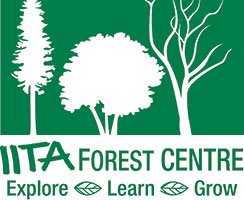There is a rapid decline of trees in Nigeria due to uncontrolled logging and clearing of forests for development and agriculture. This reduces the supply of vital commodities such as timber and medicinal plants, affecting rural livelihoods and, ultimately, the economy. With forest cover now below 4% the situation is serious but little or nothing is being done.
In a bid to do something, the IITA Forest Unit partnered with Botanic Gardens Conservation International Global Trees Campaign on the project “Prioritizing and protecting Nigeria’s most threatened trees” (November 2015 – March 2017) with a grant from the Mohammed bin Zayed Species Conservation Fund . The aim was to collect seeds, propagate threatened species and assess populations of the parent trees. (Population assessment records based on plant height, diameter at breast height (DBH > 10cm) and GPS location of each parent tree within 50 sq. m.
A 3-day workshop was organized 21 – 23 June 2016 for institutions from different parts of the country with interests in the conservation of trees and forests. The workshop pioneered communication about threatened trees in Nigeria and strengthened connections between conservation partners.
At the start of the project, 121 of Nigeria’s native trees were assessed by the IUCN Red List as threatened ― critically endangered (CR), endangered (EN), or vulnerable (VU). Subsequently a further 17 species have been red-listed bringing the total to 138 . Four main reserve areas were visited during the course of this project – Omo Forest Reserve, Ogun state; Queens Forest, Ondo state; Okomu National Park, Edo state; and Ekiti Forest reserves. A total of 37 threatened tree species, as seeds, wildlings, stem and root cuttings have been collected and population assessments were carried out for 30 species. This includes the critically endangered Nigerian kola Cola nigerica, an endemic with a restricted distribution in Omo Forest Reserve, Ogun state.
Propagation trials were carried out on 19 threatened tree species in the Botanical Nursery using different sowing media and methods to improve germination rate. By the close of the project, 22 threatened tree species had been successfully propagated and planted out in the Tree Heritage Park, and protocols for threatened trees and others of least concern were compiled as a free downloadable online Manual of Propagation for African Trees.


